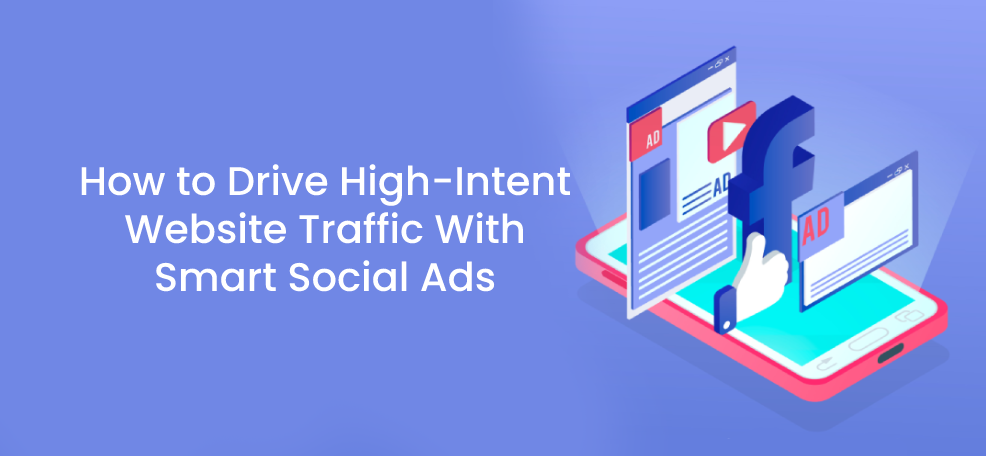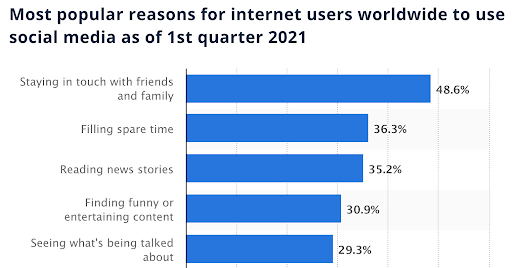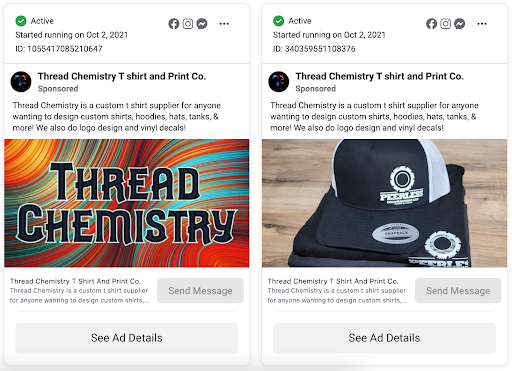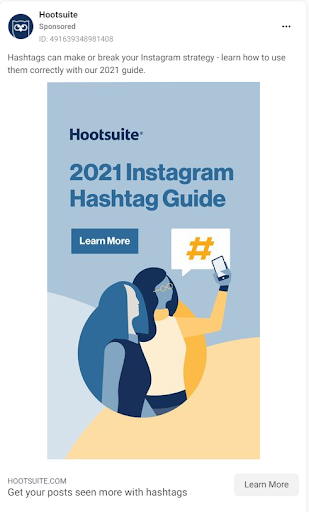Not every website visit has real business value. You can work day and night to attract people to your pages, but if they aren’t the right people in the right frame of mind, then you’ll come away with zero sales. That’s why savvier marketers focus less on traffic for the sake of traffic and instead focus on how to get the right kind of traffic, at scale.
Most companies will use both search engines and social media as ways to acquire visitors with ad campaigns, but these two channels are very different in nature.
When it comes to Google Ads, you can simply bid for high-intent keywords like “best deal on [product category],” and while it may be expensive depending on your industry, you are likely to attract people willing to part ways with their cash. The lead conversion rate has the potential to be actually pretty good through this method.
Yet social media is a different beast. Most people don’t go to social media to find something to buy – they are looking to keep in touch with loved ones and be entertained instead. Your ad is in the way of them finding the next hilarious meme or cat video. This makes it much harder to match the kinds of conversion rates you might see for bidding on high-intent keywords in search.
Companies can amass huge follower counts on their accounts without it actually triggering purchases. These audience members are there simply to enjoy the content as they procrastinate at work or wait for a bus. Yet there are ways to be smarter about this and to generate quality leads. It takes a bit of creativity and knowledge of the powerful tools available.
Use Demographic Information
It’s not uncommon for people to be surprised by who actually buys their products. The same is true for who engages with their posts. You might think you are perfectly targeting one market but find out a completely different audience is interested in buying.
Facebook pixel data is great for this. You can see the demographics of who is engaging with posts and which people are converting. You can use targeting data to create Lookalike Audiences consisting of people similar to those who already engage with your website, thus increasing the likelihood they have purchase intent.
Growthcave did exactly this for one of their clients and found a 44.84% increase in their return on ad spend (ROAS).
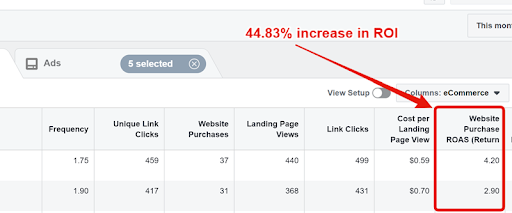
One old trick that marketers used to do was buying ads targeting people in regions of the world where clicks don’t cost as much, in the hopes that it would lead to higher overall engagement on the newsfeed, but this technique is dying, because it simply doesn’t bring in paying customers. Regardless, targeting by geo-location might not be the parameter that makes such a big difference to your campaigns – it could be the gender, age grouping or any number of other options.
It’s best to keep an open mind and let the data guide you. If you find your best converting customer isn’t who you designed an ad for, this feedback can encourage you to create new ads with these people in mind in the future, leading to increased high-intent customer views over time.
Use the Facebook Ad Library
One key resource to refer to when creating high-intent campaigns is the Facebook Ad Library. For transparency reasons, Facebook lets everyone see all advertisements running across the platform and for some, how well they are performing. This is a fantastic way to learn from other people’s experiments and save yourself time.
One notable aspect is being able to see the different versions of each post a competitor is running. From this, you can see what they are experimenting with, and by tracking over time, you can work out which options worked for them if they continue to use the same styles in the future. This goes for the image style but also the copy too and its tone. If there’s a noticeable shift where there were once ten versions of a post caption and then there is only one, you can be pretty sure they’ve decided on the best path.
One great trick for this is to check out if your competitors are using UTM parameters in their links. If they are, then you can see what their most successful ad is and copy and paste the link into a text editor. You can then analyze it to see what they’ve set for utm_campaign, utm_medium, utm_content, and utm_term. Marketers can often leave useful clues to their plans in these tags. Take this advert by Hootsuite for example where you can find the name of the campaign: selfserve-alwayson-prospecting.
Another valuable reason to spy on your competitors is to see if they all seem to make a shift together which you hadn’t been considering. By keeping track of what the market is doing as a whole, it can stop you from using outdated methods that your competitors no longer believe in.
Your competitors are trying to do the exact same thing as you. They want the high intent traffic and will be tweaking their strategy to achieve this goal. If you can reluctantly admit their competence then you can use their tactics to increase your own high intent traffic.
Experiment Voraciously
It’s common knowledge that marketers should iterate on ads and test out different options to see what performs best. Yet in practice, this can be difficult, due to the time investment in creating high-quality ads that can attract consumers and represent the brand well.
The ideal content to post for high-intent clickthroughs doesn’t follow universal rules, and whatever you think your guidelines are can fail in the face of real audience members. The experimentation process accepts this rather than tries to fight it.
When you combine experimentation in Facebook advertising with the pixel, you can see how well a piece of content performs in terms of driving people to your website who go on to convert. You can run all the alternate versions simultaneously for a set time period then see the results and allocate more money to the ads which have the best conversion rate.
In the case of video ads, however, running agile experiments can be challenging, simply because there are often longer, more expensive production cycles to contend with. However, using a great video editor can make all the difference. Videoleap, for one, makes it easy to quickly create many different versions of a video. It removes much of the manual grunt work from the experimentation phase to free up marketing resources.
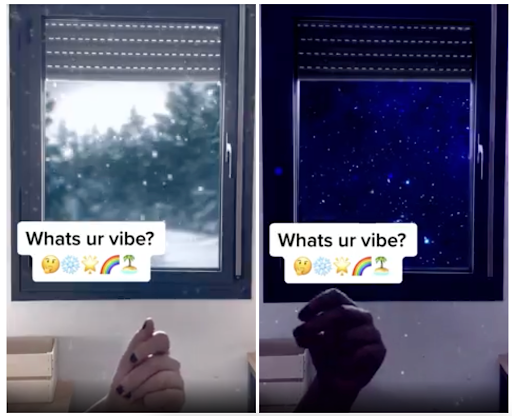
Unlike other editors, you can add effects and filters with little effort. For example, on some ads you might add text on top of the video, on others, you could zoom in closer or add a filter so the video adds a “warmer” or “colder” vibe. When you see what performs the best, you can then apply these lessons to future videos you create too.
Auto-boost Your Stickiest Content
Some marketers are unaware of, or too fast to dismiss, the Boosted post option in Facebook, and they are missing out. A boosted post is a normal Facebook post that for a small cost can be pushed out to a larger audience. A post created through the Facebook Ad Manager has more options for customization, but this naturally means it takes longer and is more expensive. This means boosted posts are often the better choice for more experimentation and rapid feedback.
The best thing about boosted posts is the option for automatically boosted posts. It’s a monthly advertising plan which finds the best posts on your page and gives them a boost. All you need to do is set the budget and how often you want posts to be boosted.
The basic metric Facebook looks out for is when a post gets 80% more reactions, comments or shares than your other posts. When this happens, Facebook can automatically boost these posts using up your budget. It means you could choose not to monitor this at all and let Facebook work for you.
Though it’s smarter to build in approvals so you can check the additional social engagement is converting to sales before boosting. Yet it simplifies your process because you only need to check the posts Facebook recommends rather than everything you post manually.
When used correctly, automatically boosted posts can be a cheaper way to allow the posts which are converting well to a wider audience thus increasing high intent traffic to your site.
Advertise to Previous Visitors
Another great benefit of using the Facebook pixel is you can intentionally target people who’ve already viewed your site but not actually made a purchase. These people were curious enough to click through to your site but weren’t quite ready yet. It means they already have some familiarity with your brand which makes them of high value.
The marketing “rule of seven” states people need to see your brand seven times before buying, and they might just need that extra little push.
You can create specific ads to entice them in. One option is to give them a time sensitive offer where if they buy within say the next 24 hours then they receive a 10% discount. This added pressure may tip some from potential customers to paying customers.
Another option is to show them testimonials from other people like them. It may be you were too new for them to buy the last time they visited your site but a positive review by a real person might make them think you are trustworthy. You can experiment to see which type of testimonial your audience resonates with the most. Little Spoon has seen success by using reviews from customers rather than sales language in their ads.
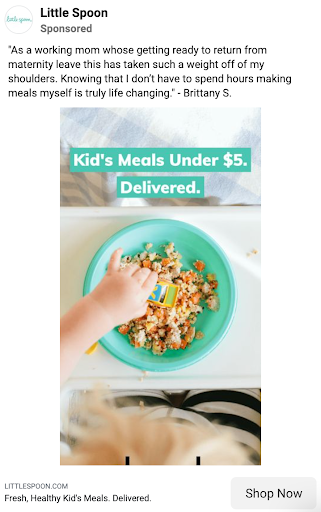
Alternatively, you can go for the less subtle approach like ModCloth, and simply tell customers you want them back
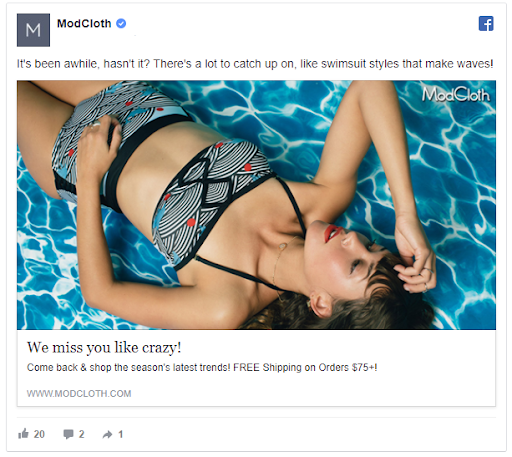
There are few ways to get higher intent traffic from social media than to target actual visitors of your website. Website visitors who are retargeted are more likely to convert by 43%.
Wrap Up
Stop chasing traffic purely for the sake of high views. Instead use the techniques in this article to boost your high intent traffic and drive the sales your business or client needs. Everything mentioned here is easily accessible and you can start using it today.
Taking a little time to experiment with different features in a creative way can make a huge difference to the business’s bottom line. Social media can be used effectively to funnel the potential buyers you want to your site. Use smarter social media ads to get ahead.
